Ask any pilot, crew chief, or aviation enthusiast about their favorite aircraft, and they’ll tell you why the aircraft they flew is the best. It may be the SR-71 Blackbird for its speed and altitude capabilities, the A-10 Warthog for its large gun, or the P-51 Mustang for its ability to protect bombers during WWII. Whatever their preference, each individual will probably tell you a story associated with that aircraft. And whether the story belongs to them or is one they’ve heard secondhand, it’s the stories associated with aircraft and their crew that keep them ’alive’ to those that love them.
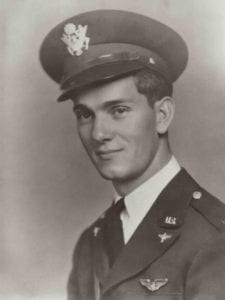
Leon C. Packer, a Utah pilot who flew with the 8th Air Force during WWII, could tell many stories about his aircraft, the B-24 Liberator: flying raids over Italy, delivering supplies to General Patton in support of the Paris liberation, or bombing enemy lines on D-Day. Even though Gen Packer is no longer alive, his stories are preserved in the journals he recorded, the photos he took, and the items he kept from the war. Some of those items are on display in a “Local Heroes” exhibit at the Hill Aerospace Museum.
The Local Heroes Exhibit was created to preserve and highlight the stories of Utah Airmen like Leon Packer, as well as the contribution they have made in our nation’s defense. Leon grew up in Brigham City, Utah, and was the first in his family to attend college. He graduated from Weber State with a degree in Accounting in 1938. He then completed Army Air Corp Flight Training in 1941 and commissioned as a 2nd Lieutenant.
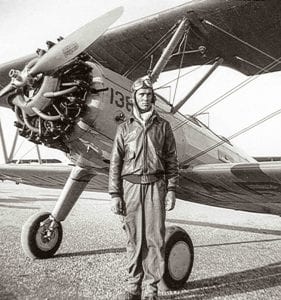
After earning his Multi-Engine Flight Certificate at the Boeing School of Aeronautics, the Army Air Force assigned Leon to the 93rd Bombardment Group (heavy) at Fort Meyers, Florida to complete advanced flight training before deploying overseas. Once during training, Leon drove his car down a foggy runway to provide visibility and direction for other pilots with his headlights. One bomber pilot flew so close that his propeller ripped through Leon’s car and knocked his hat off his head, crushing the insignia on his cover and injuring his hand. After the incident, Leon called the mangled insignia “Scrambled Eggs” due to its mangled, yellow appearance.
During the summer of 1942, the 93rd Bomb Group gained its first combat experience flying anti-submarine patrols over the Gulf of Mexico. Earlier that year, several Merchant Marine ships in the area had been torpedoed by German U-boats. On 18 July, however, Leon located and destroyed a U-boat, one of three claimed by the 93rd.[1]
Later that year, Leon flew to England as part of the first group to use B-24s in combat. On 16 April, 1943, Leon’s group received the assignment to attack a German submarine manufacturing facility in France. On his way back to England, while flying the “Yardbird,” his crew encountered intense flak, with all four engines destroyed and their aircraft severely damaged.
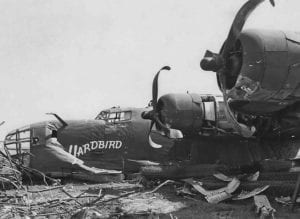
Leon’s personal account of the incident reads, “Number three engine was smoking and the prop ran away. Number four fuel line was shot out. Right aileron cables and stabilizer cables were shot out. Rudders partially locked. Radio shot out. Extremely large holes in the right wing. Flaps shot out. Entire rear part of the fuselage filled with holes. Hydraulic system shot out. Tail turret out.”[2]
Remarkably, Leon coaxed enough life out of a single engine to return the Yardbird safely to England. He and his crew flew in so low that hedgerows tore off the Yardbird’s landing gear. Although some of the crew received significant injuries, everyone on board when the aircraft landed survived the incident.
Things hardly slowed down for Leon following his crash. During the summer of 1943, he flew out of North Africa in raids over Italy. During one of these raids, flak from enemy fire forced Leon to land his B-24 in a dry lakebed in Sardina. Thinking they were in enemy territory, Leon and his crew hid after the crash. However, they soon learned that General Patton recently took Sicily and his crew was in liberated territory. The surrounding Italian community celebrated Leon and his crew as the first American soldiers on the island during the anticipated liberation.
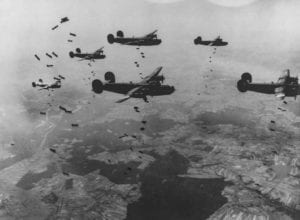
Following the liberation of Italy, Leon took part in “Operation Overlord.” In the early morning of 6 June, 1944, Leon flew one of 1,200 heavy bombers used to attack enemy lines in advance of the Allied march on Normandy. An estimated 11,590 aircraft flew on D-Day, one of the most decisive and severe battles of WWII.
With the liberation of France came food and gasoline shortages. During the fall of 1944, Leon oversaw the delivery of much-needed supplies from North Africa to General Patton in Paris. After hearing Leon’s account of this event, his cousin wrote, “I shall never forget the story of the delivery for Patton to Paris. Maybe that was the service that helped win the war.”
In October 1944, Leon, now a colonel, returned stateside to serve at the Pentagon with the Plan & Policy Group, Air Intelligence, at Army Air Force Headquarters. While in this position, he worked with General Ira C. Eaker and General Hap Arnold to establish the U.S. Air Force as an independent branch of the military in 1947.
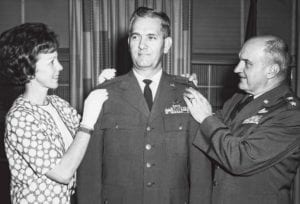
After completing his service at the Pentagon, Leon returned to Utah and became President and General Manager of Packer Motor Co. He remained active in the USAF Reserves, and became the Assistant Commander of the Ogden Air Material Area at Hill AFB in 1961. Several years later, the Air Force promoted Leon to Brigadier General in 1967. Shortly thereafter, in 1974, after 33 years of serving his country, Leon retired from the USAF.
Leon passed away in 1985 at the age of 68. Today, his WWII bomber flight suit, medals, and other memorabilia are on display at the Hill Aerospace Museum. Aaron Clark, Director of the Museum, said, “General Packer’s story as an Airmen clearly demonstrates why we created this new exhibit…. [He] is a hero and has a story Utahns and the world should know.”[3] The exhibit will become a permanent fixture at the Museum. People can submit future proposals for the exhibit by visiting www.aerospaceutah.org/
[1] Packer, Boyd K. “The Spirit of Revelation.” Ensign, Nov. 1999, churchofjesuschrist.org. Accessed 1 Apr., 2020
[2] “93Bomb Group.” American Air Museum in Britain, http://www.americanairmuseum.com/unit/546. Accessed 27 Mar, 2020.
[3] Cromar, Todd. “New Utah Airmen heroes exhibit unveiled at the Hill Aerospace Museum.” Hill Air Force Base, 19 Nov., 2019. https://www.hill.af.mil/News/Article-Display/Article/2020361/new-utah-airmen-heroes-exhibit-unveiled-at-the-hill-aerospace-museum/. Accessed 8 Apr., 2020.
